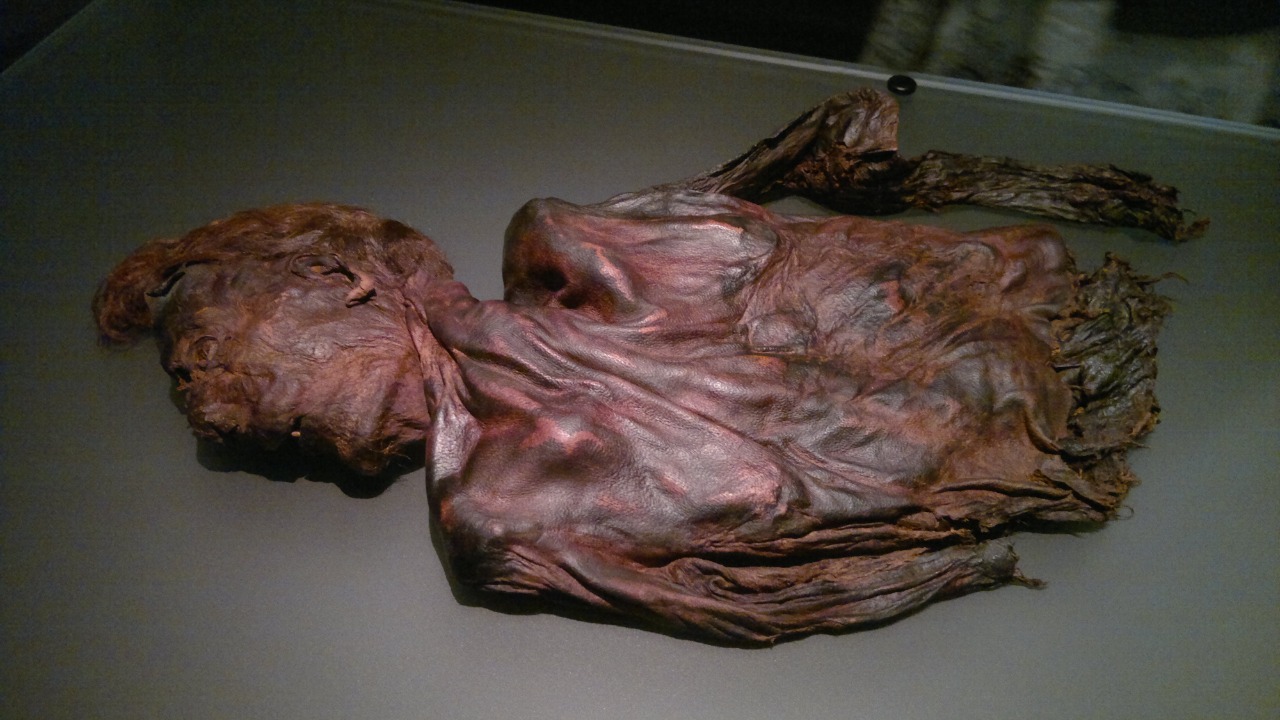
In a remarkable archaeological find, a man who died approximately 1,000 years ago in what is now Sweden has yielded preserved microorganisms from his stomach contents, offering unprecedented insights into medieval gut microbiomes. These organisms, including bacteria and possibly parasites, survived in the bog-preserved remains known as the “Viking bog body.” This discovery challenges previous understandings of microbial preservation in ancient human tissues. [Source]
Discovery of the Bog Body
The remains of the Viking-era man were unearthed in a peat bog near Falköping, Sweden, during routine conservation work on a medieval site. The body, estimated to be around 1,000 years old based on radiocarbon dating, was found in an extraordinary state of preservation. The bog’s acidic, low-oxygen environment played a crucial role in maintaining the integrity of the body, particularly the stomach contents, which were remarkably intact. This environment prevented the full decomposition typically expected in such ancient remains, allowing for the survival of microorganisms within the stomach.
Local archaeologists from the Västergötland Museum were instrumental in identifying the unusual preservation of the body. Recognizing the potential significance of the find, they decided to conduct advanced sampling. The discovery of the intact stomach contents was particularly surprising, as it provided a rare opportunity to study the gut microbiome of a person from the Viking era. This find not only sheds light on the preservation capabilities of bog environments but also opens new avenues for understanding ancient human health and diet.
The Man’s Identity and Context
The man is believed to have been a Viking-era individual from the 11th century, as suggested by the artifacts found alongside his body. These included iron tools and fragments of clothing, which helped archaeologists piece together a picture of his life and times. The presence of such artifacts indicates that he may have been a person of some standing or involved in specific trades or activities typical of the Viking period.
Analysis of the stomach contents revealed traces of grains and fish, providing insights into his diet. Additionally, the presence of certain microorganisms suggested possible infections or health conditions he might have suffered from. This evidence offers a glimpse into the daily life and health challenges faced by people living in Scandinavia during this period. The historical context of bog burials in the region suggests that this preservation might not have been intentional but rather an accidental result of the wetland environment.
Analysis of the Surviving Organisms
The extraction of microorganisms from the stomach involved a meticulous process to ensure the samples remained uncontaminated by modern bacteria. Researchers carefully dissected the stomach tissue under sterile conditions, allowing them to isolate the ancient microorganisms effectively. Among the key organisms identified were species of Helicobacter pylori and other gut bacteria that closely resemble those found in modern human microbiomes. These organisms were preserved through a combination of desiccation and the protective qualities of peat tannins.
To analyze these ancient microbes, scientists employed advanced DNA sequencing techniques, such as metagenomics. This approach enabled them to reconstruct the microbial community without the need to culture the ancient samples, which could have introduced contamination. The findings provide a unique window into the gut health of a Viking-era individual and offer a baseline for understanding how human microbiomes have evolved over the centuries.
Scientific Implications and Future Research
This discovery marks the first direct evidence of a 1,000-year-old human microbiome, offering a rare opportunity to study evolutionary changes in gut bacteria over time. The implications of this research extend beyond archaeology, as it could inform studies on ancient diseases. For instance, the presence of Helicobacter pylori might provide insights into historical occurrences of ulcers or dysbiosis, conditions linked to these pathogens.
Ongoing collaborations between Swedish researchers and international microbiologists aim to sequence more samples from the bog body and compare them to contemporary populations. This research could reveal how modern lifestyles and diets have influenced the human microbiome. By understanding these changes, scientists hope to gain insights into the role of gut bacteria in health and disease, potentially leading to new treatments or preventive measures for microbiome-related conditions.
The preservation of these microorganisms in the Viking bog body not only enhances our understanding of ancient human health but also underscores the importance of interdisciplinary research in uncovering the complexities of our past. As scientists continue to explore these ancient remains, they may unlock further secrets about the lives and environments of our ancestors, providing a richer context for the history of human health and disease.